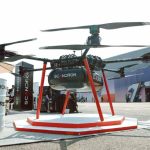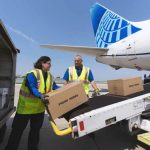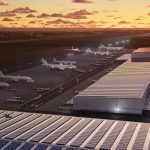Farnborough International Airshow Supply-chain challenges derail global aviation industry's speedy post-pandemic recovery
Post-pandemic, the recovery of many sectors, aviation one of them, has been gradual and the reasons for that are several. Despite encouraging passenger and cargo growth in the aviation sector, aircraft manufacturing is affected by supply chain issues, affecting aircraft deliveries. This came to the fore at the recently concluded Farnborough International Airshow (July 22-26)
Several OEMs have been airing the issue and how it has impacted the timelines of aircraft deliveries, both passenger and freighter. Airbus is sitting with an aircraft backlog of 8,626 jets as of March 2024, while Boeing’s abacklog is 6,156 aircraft, the latter affected by regulatory issues, besides, of course supply chain.
As of June 2024, Embraer’s firm order backlog was $21.1 billion, which is a 7-year high and more than 20% higher than the previous year. The new aircraft orders which total over 15,000 is likely to be cleared in about 13 years, keeping the 2023 production rates, according to a report.
At the show, aircraft orders were not like in Paris last year where it ran into four digits. Airbus which began on a slow note, by the end of the show had garnered more orders than Boeing which was the first to open account at the show with US-based global cargo airline National Airlines picking up four Boeing 777 freighters. The aircraft will be delivered in the first half of 2026.
Overall, about USD 104.25 billion worth of deals were signed at the show, with 260 total commercial aircraft orders.
Along with Boeing and Airbus, Regional aircraft manufacturer, Embraer from Brazil, was gung-ho at the show, announcing expansion plans, freighter upgrades and increased profitability, despite supply chain issues.
At a news conference Embraer called for, the airline’s President & CEO Francisco Gomes Neto did not mince words about what the company was facing with regard to supply chain and how it was impacting deliveries. Despite that Embraer was positive about its growth and the prospects and it was working on upgrades of E1952 conversion to freighter, among other production plans. Brazil has approved the structural modification of the conversion.
Embraer is converting some of its passenger aircraft into freighters to meet the growing demand of cargo transport from e-commerce.
At Farnborough it announced upgrades to the passenger-to-freighter (P2F) conversion programme includes structural changes to the aircraft – removal of seats; widening of main deck door; and reinforcing the floor to support heavy containers. The company will be enhancing the smoke detection sensors and storage of hazardous materials; a new cargo handling system among others. The upgrades are to cost $1 million per aircraft.
Embraer’s E190F and E195F P2F conversions are available for all pre-owned aircraft of those models. The E190F conversion has a maximum payload of 13,500kg and Embraer claims that the converted aircraft will have over 40% more volume capacity, three times the range of large cargo turboprops, and up to 30 % lower operating costs than larger narrowbody jets.
Embraer also expects the younger more fuel-efficient E190F and E195F to have lower emissions than their larger counterparts.
At Farnborough, it was the freighter segment which got to open the account of aircraft orders with National Airlines picking up six freighter aircraft from Boeing.
Engaging with supply chain critical
Embraer’s CEO & President mentioned how Embraer was strategizing on global procurement and supply chain. It has set up a new organization with a more holistic and combined approach; multidisciplinary teams working with critical suppliers; supply chain digital integration and transparency; suppliers C-suite engaged in recovery and deliveries etc.
The International Air Transport Association (IATA) said supply chain issues continue to affect global trade and business. Airlines have been directly impacted by unforeseen maintenance issues on some aircraft/engine types as well as delays in the delivery of aircraft parts and of aircraft, limiting capacity expansion and fleet renewal.
Maybe that explains the aircraft orders which have not had headline grabbing deals. Many of the aircraft orders will see not see early deliveries, for instance the Japan Airlines order of Boeing and Airbus aircraft are scheduled for 2028 onwards.
Another reason for supply chain disruption has been political and conflicts in some key zones, even while the governments are supporting the sector.
In the United Kingdom, the new Prime Minister, Sir Keir Starmer has thrown his weight behind aerospace and defence sector, promised to enhance defence budget by 2.5%, thus, creating more employment opportunities.
In fact, the Farnborough Aerospace Consortium has urged the Prime Minister to continue the programs undertaken by the previous government and not to disrupt the rhythm.
Adding to the challenge of supply chain is the issue of sustainability and all stakeholders in the supply chain falling in line. Some delegates mentioned how bringing on board stakeholders to the sustainability agenda did slow down the plans.
Quality control issues, talent shortages and new regulations (with environment at the core) have to be complied with all along the supply chain and that means that much more investment in the supply chain.
A report by McKinsey said that aerospace executives were about 18 times more likely to mention supply-chain-related terms, such as “shortages,” during earnings calls in 2022 than they were in 2014. Their views on supply chain performance also showed a dramatic negative shift starting in 2020.
Slow production rates
The concerns of aviation experts at Farnborough are real as OEMs continue to struggle with regard to sourcing components critical to aircraft manufacturing, finding raw materials, electronic components etc. The production rates of OEMs have indeed slowed down. However, the industry leaders, like how the Embraer President mentioned, express that the industry needs to innovate, become smart in sourcing and agile.
Even while the total number of travellers are expected to reach 4.96 billion in 2024, a record high and total air cargo volumes expected to touch 62 million tonnes, the industry has to get its act right by working on supply chain.
The IATA Director General, Willie Walsh, said: “The airline industry is on the path to sustainable profits, but there is a big gap still to cover. A 5.7% return on invested capital is well below the cost of capital, which is over 9%.”
“And earning just $6.14 per passenger is an indication of just how thin our profits are—barely enough for a coffee in many parts of the world. To improve profitability, resolving supply chain issues is of critical importance so we can deploy fleets efficiently to meet demand. And relief from the parade of onerous regulation and ever-increasing tax proposals would also help. An emphasis on public policy measures that drive business competitiveness would be a win for the economy, for jobs, and for connectivity. It would also place us in a strong position to accelerate investments in sustainability,” he emphasized.














